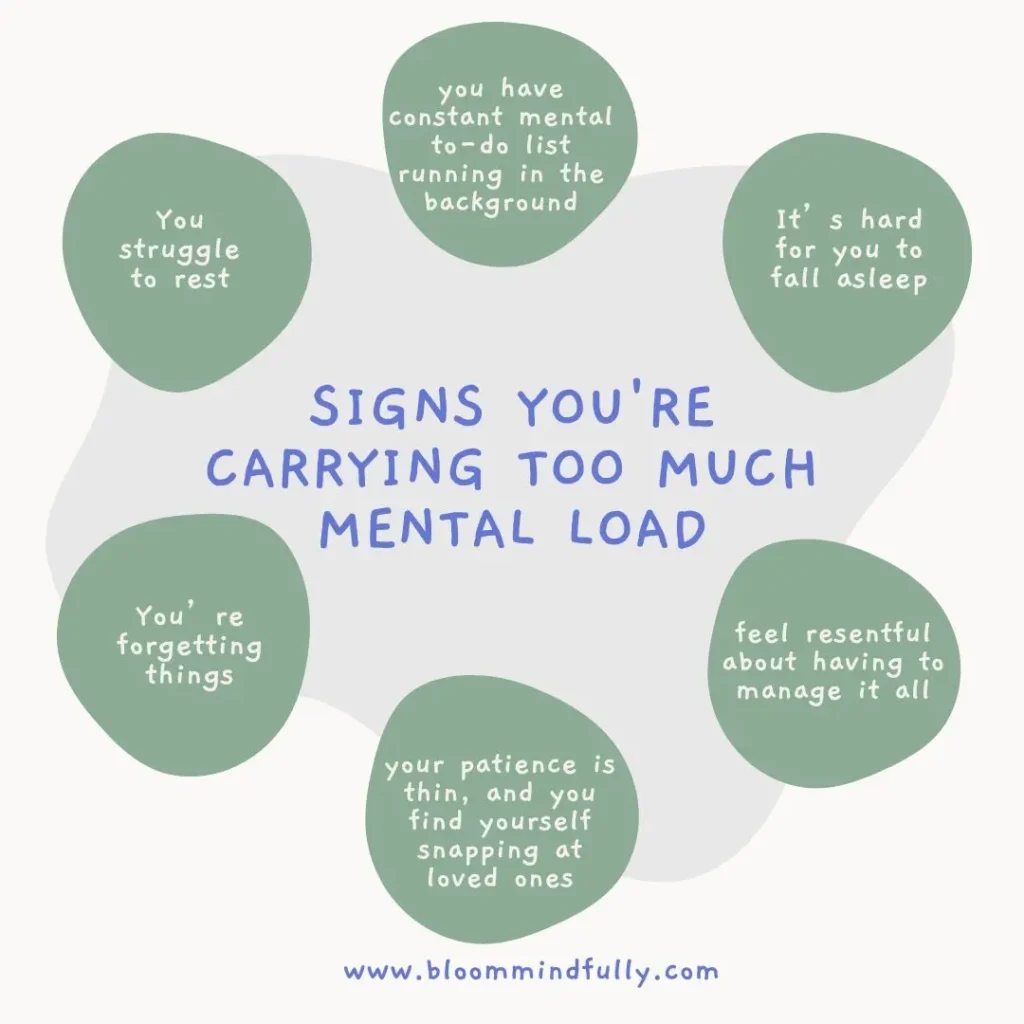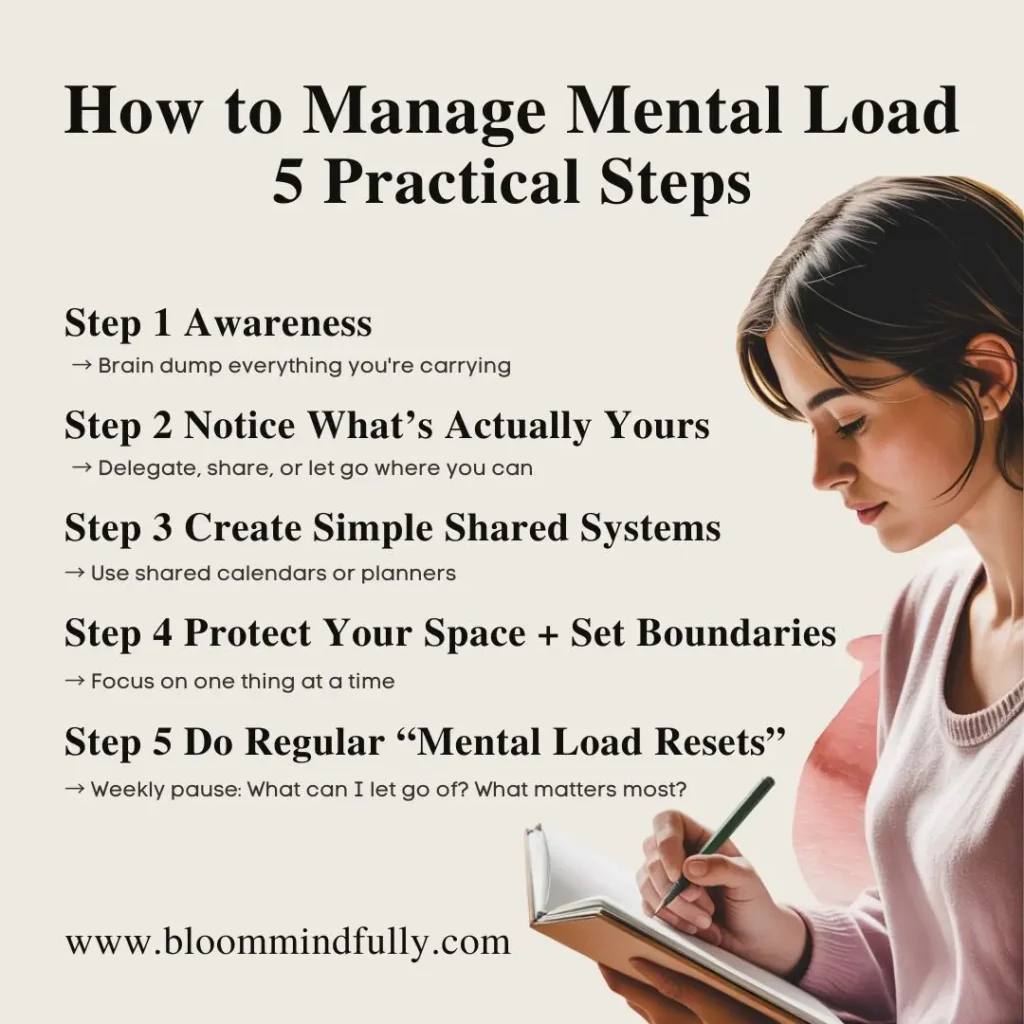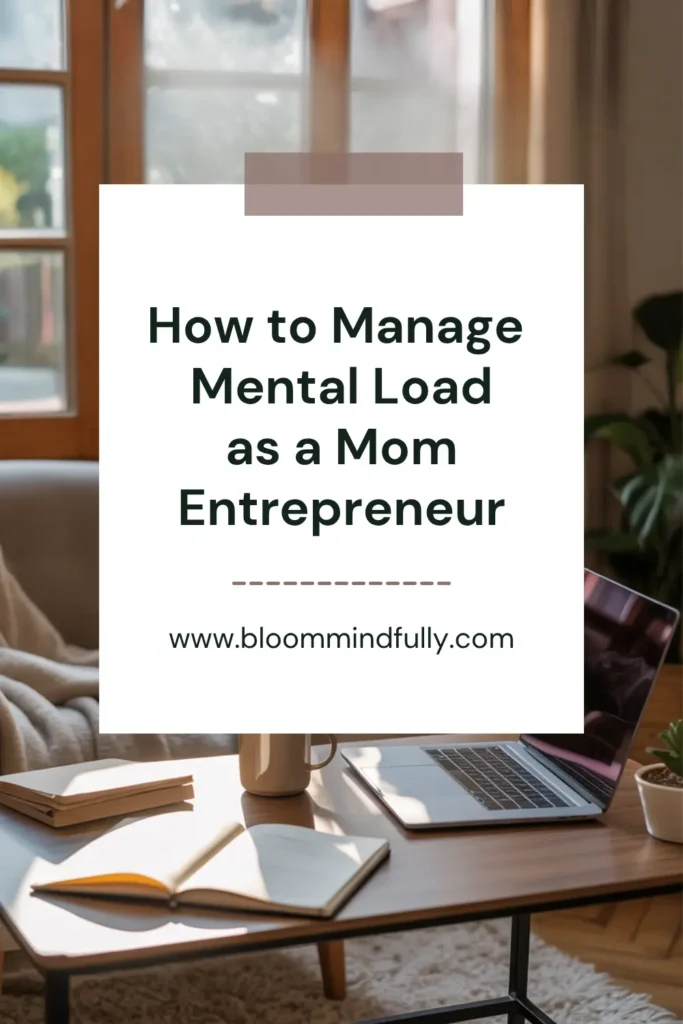How to Manage Mental Load: Reduce Overwhelm and Feel More in Control
Running a business and raising a family comes with a lot of mental load.
The school dates. Client work. The text you still need to answer. The grocery list. The constant to-do’s, all running in the background while you try to keep the business moving forward.
When your mind gets this full, it’s hard to show up fully in your work and at home.
Maybe you’re feeling scattered. Maybe your brain feels like it’s always “on”. You forget little things and you’re running on empty more often than you’d like.
If you’ve been wondering how to manage mental load in a way that helps you feel less overwhelmed and more in control of your days, I’m sharing a few simple practices that have made a big difference for me. They’ve helped me feel less overwhelmed, more focused, and more in control of my time and energy.

What is Mental Load?
Mental load is all the invisible, ongoing mental work that you’re carrying throughout the day. It’s the constant tracking of everything that needs to get done, both at home and in your business.
Some of the most common examples:
It shows up everywhere — in your home, in relationships, and in your business.
When mental load gets too heavy, it often leads to time scarcity thinking, a feeling of never having enough time. Practicing a more time abundant mindset can help ease that pattern.

Signs You’re Carrying Too Much Mental Load
How can you tell when the mental load is getting too heavy?
Here are some common signs:

Feeling pulled in every direction and craving more breathing room?
The Time & Energy Planner helps you see where your time is going, protect your energy, and build simple rhythms that honor both your business and your life, without running on empty.
Why Mental Load Feels So Draining
One reason mental load feels so exhausting is that it never really feels finished. There’s always something else to remember, plan, or figure out.
Many of us were also raised with the belief that we should manage it all, the home, kids, business — without missing a beat. That pressure runs deep.
When most of those details live in your head, you’re mentally juggling tasks all day long. That constant mental spinning wears you down quickly.
The more it builds, the easier it is to slip into time scarcity thinking, feeling like there’s never enough time and you’ll never catch up. If that’s a pattern you’ve noticed, this post on how to overcome time scarcity mindset offers some helpful ways to break that cycle.

How to Manage Mental Load: 5 Practical Steps to Lighten the Mental Load
You can’t completely erase the mental load, but you can make it feel lighter, more manageable, and less draining.
Here are a few simple shifts that have helped me create more breathing room:
Step 1: Awareness & Acknowledgment
Start by writing down everything you’re carrying: all the tasks, worries, reminders, and to-do’s running through your head. A simple brain dump brings so much clarity and validates what you have been managing.
It’s the first step toward lightening the load.
Step 2: Notice What’s Actually Yours (and What Isn’t)
It’s easy to end up carrying things that aren’t really yours.
Look through your list. Are there tasks you could share, delegate, or simply let go of?
You don’t have to do it all. Start having those conversations with your partner, your family, and even your team, so the mental load doesn’t fall on you alone.
Step 3: Create Simple Shared Systems
One of the most helpful shifts for me has been letting go of the idea that I need to carry it all in my head.
Whether it’s for home or business, simple systems can make a big difference.
In my family, shared calendars (like Google Calendar), family organization apps (like Cozi), and a weekly task board help keep things visible and shared. In my business, I use project management tools (like Excel and Notion) to track client work, ideas, and deadlines — so my brain isn’t juggling it all.
The more you can move mental load out of your head and into a visible system, the lighter it starts to feel.
Step 4: Protect Your Space + Set Boundaries
It’s hard to think clearly when your brain is in constant multi-task mode.
Give yourself permission to focus on one thing at a time. Protect your time for rest, creative thinking, and breathing room in your week.
Step 5: Do Regular “Mental Load Resets”
I like to do a weekly reset, nothing fancy, just a pause to brain dump, reflect, and ask:
This kind of weekly reset help clear out mental clutter, which can quietly build up and make mental load feel even heavier. You might enjoy this helpful article on what is mental clutter and how it affect your focus and energy.
How to Manage Mental Load at Home
At home, mental load often looks like keeping track of all the little things behind the scenes. Groceries. Appointments. School forms. Cleaning routines. Family schedules. Kids’ needs.
Ways to lighten it:

How to Manage Mental Load in Relationships
In relationships, mental load often looks like managing other people’s feelings and expectations. This can include remembering birthdays, planning events or trying to keep everyone happy.
Ways to lighten it:
How to Manage Mental Load In Your Business
In your business, mental load is often behind the scenes. Deadlines, remembering follow-ups, managing client needs, juggling content ideas, handling finances and keeping up with admin work, all while trying to grow and serve.
Ways to lighten it:

Looking for real conversations and support as a mom entrepreneur?
Inside the Mindful Living for Entrepreneur Moms Facebook Group, you’ll find practical tools, gentle growth, and a community that gets it, no hustle culture, no judgment. Just real support as you build a business that fits your life.
Start Managing Your Mental Load Today
Managing the mental load of both business and family life is an ongoing practice, and small mindset shifts can make it feel so much lighter. You’re not meant to carry it all on your own.
I’d love to invite you to join us in the Mindful Living for Entrepreneur Moms Facebook group, a supportive space for mompreneurs creating more space, clarity, and ease in both business and life.










